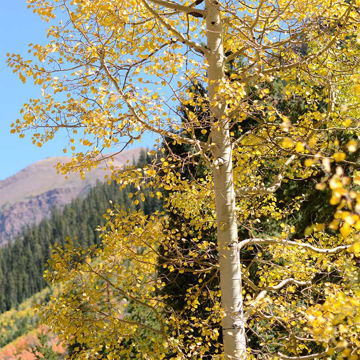Products tagged with 'shade'
Quaking Aspen
Northern Red Oak Seedlings
The northern red oak has been called “one of the handsomest, cleanest, and stateliest trees in North America” by naturalist Joseph S. Illick, and it is widely considered a national treasure. It is valued for its versatility and hardiness in urban settings. This medium to large tree is also known for its brilliant fall color, great value to wildlife, and status as the state tree of New Jersey.
- Displays vibrant red fall color
- Is a fast-growing tree that offers great shade and works well as a street tree
- Tolerates pollution and compacted soil
Scarlet Oak Seedlings
Aptly named, the scarlet oak is a parade of red throughout the seasons. In the early spring, new leaves unfurl with a red hue. The vibrant red fall display is truly magnificent. And those red leaves often hang on through the first snow, giving winter a touch of much-needed color. The inner bark of the scarlet oak is even red.
- Displays vibrant scarlet red fall color
- Tolerates a wide range of soils
- Is a fast-growing oak
Silver Maple Seedlings
Silver is the right word to describe this maple. With even a light wind, the tree produces a lovely shimmery effect thanks to the silvery undersides of its leaves. The bark, too, is silver in color, particularly when the tree is young. Fast growth has become the name of the game in the world of landscaping, and the silver maple is a champ in this department.
- Displays green leaves with silvery-white undersides
- Tolerates a wide range of soils
Sugar Maple Seedlings
The sugar maple is one of America’s most-loved trees. In fact, more states have claimed it as their state tree than any other single species—for New York, West Virginia, Wisconsin, and Vermont, the maple tree stands alone. One of its most prominent features is amazing fall color. As the seasons change, the leaves turn vibrant shades of yellow, burnt orange, and red.
- Boasts brilliant fall colors of yellow, orange, and red
- Provides great shade because of a dense crown
Tuliptree Seedlings
One can argue about whether the "tulips" are the outline of its leaves or its cup-shaped flowers. But both undoubtedly contributed to the fanciful name given to this tree by early settlers. And the tuliptree is still beloved for its beauty today, serving as the state tree of Kentucky, Indiana, and Tennessee. It is the tallest of the eastern hardwoods — and a rapid grower when conditions are right.
- Features bright green leaves that resemble tulip flowers
- Blooms in May and June, producing tulip-shaped flowers with aromatic stems
- Provides vibrant yellow color in the fall





